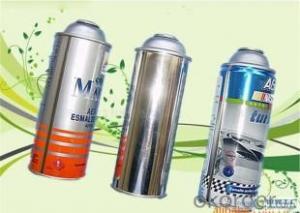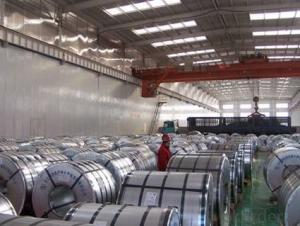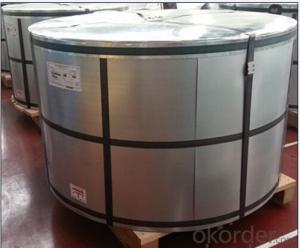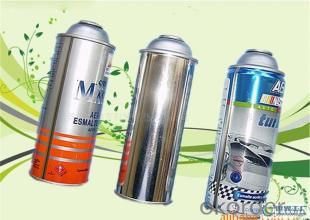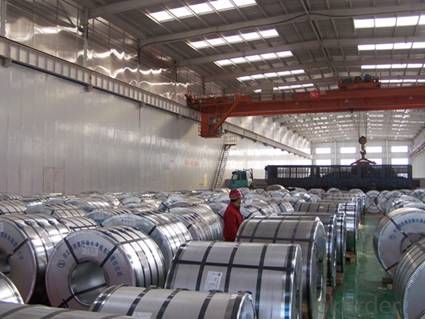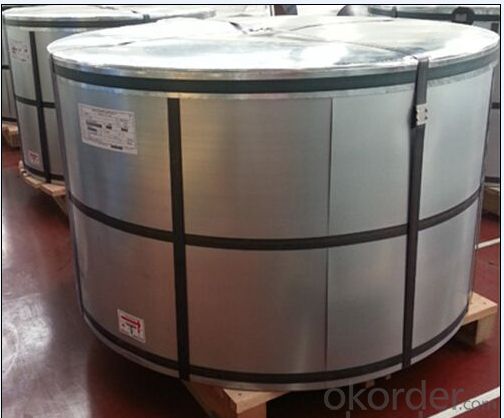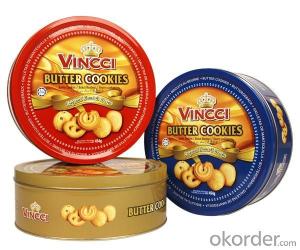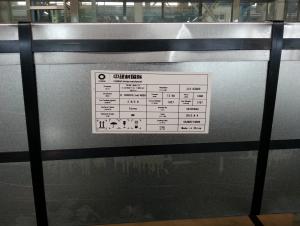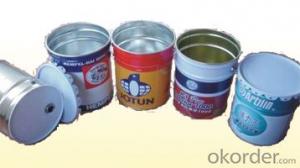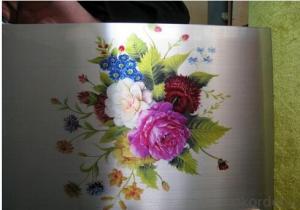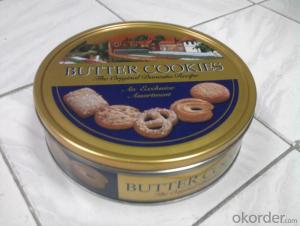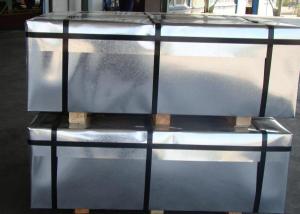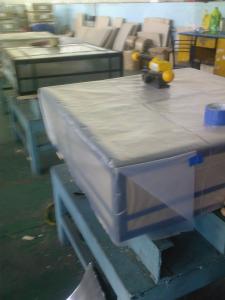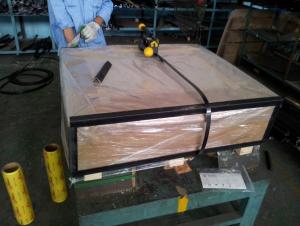MR Prime Tinplate For Aerosol Cans, Dome & Cone
- Loading Port:
- Tianjin
- Payment Terms:
- TT OR LC
- Min Order Qty:
- 25000 m.t.
- Supply Capability:
- 40000 m.t./month
OKorder Service Pledge
OKorder Financial Service
You Might Also Like
1.Brief Introduction
Tinplate is widely used for making all types of containers, containing industrial usage such as paint can, oil can, aerosol cans etc., and food cans like milk powder cans, tomato paste can, dry food cans etc.
2. Quality
As a state owned company and a large tinplate supplier in China, our tinplate quality ranks 1st level in China, similar to Bao Steel, Posco etc.
3. Specification
standard: GB/T2520, JIS G3303, DIN EN10202
Material: MR /SPCC
Thickness available: 0.16-0.50MM
Width available: 600~1050MM
Temper grade: T1 – DR8
Tin coating: ordinary 2.8g/2.8g, 5.6g/5.6g and others
Package: sea worthy export package.
Applications: Tin can for chemicals & paint cans, industrial cans, food cans
4. Our production steps
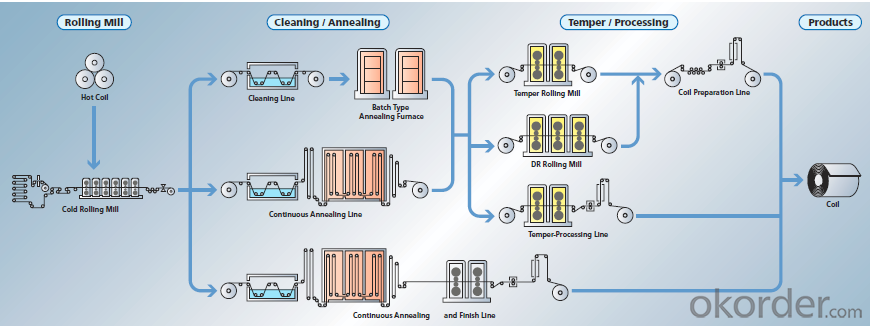
5. Usage Scope
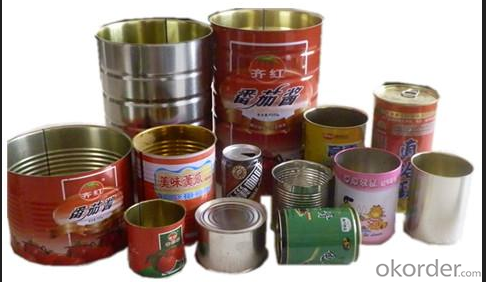
6. Our euxport market
our tinplate has been popularly exported to more than 30 countries, including Asia, Europe countries, Gulf area, Sounth America, Northe & South Afric etc.
7. FAQ
a. what's the annual output?
about 500,000 tons per year.
b. where's the raw matrial from?
our hot rolled coil is purchased from Capital Steel and other state owned mill, with quite good quality.
c. how long is the delivery time?
normally for SPCC about 45~55 days, while 65~75 days for MR material
d. how to control the quality during production process?
inside our workshop, we have MES syestem. It realizes the optimization of the production procedure in the workshop. It could record each step of the whole production procedures, and if some problem appears, factory could easily found and take action, it’s quite helpful to monitor and control the quality.
- Q: What are the different ways to open tinplate containers?
- There are several different ways to open tinplate containers, depending on their design and intended purpose. Common methods include using a can opener, pulling a tab or ring pull, twisting off a lid, or using a tool like a pry bar or knife to pry the lid off.
- Q: How to test the tightness of tin metal cans?
- A careful observation of empty tank tank bottom edge and welding seam has no air bubbles, where the same parts of continuous bubbles, should be judged as leakage, leakage of the recording time and vacuum degree, and make a mark in the leak site.
- Q: Can tinplate packaging be used for clothing accessories?
- Yes, tinplate packaging can be used for clothing accessories. Tinplate is a durable material that can be shaped into various sizes and designs, making it suitable for packaging items such as jewelry, pins, buttons, or small fashion accessories. It provides a stylish and unique packaging option that can enhance the presentation and protection of clothing accessories.
- Q: How does tinplate perform in terms of corrosion resistance compared to other materials?
- Tinplate offers excellent corrosion resistance compared to many other materials, particularly when exposed to moisture or acidic environments. The tin coating acts as a protective barrier, preventing the underlying steel from corroding. This makes tinplate a preferred choice for packaging and other applications where corrosion protection is crucial.
- Q: What are the main uses of tinplate?
- Tinplate is primarily used in the packaging industry for food and beverage containers, such as cans for canned foods, beverages, and aerosol products. It provides a protective coating to prevent corrosion and maintains the quality and freshness of the products. Additionally, tinplate finds applications in the manufacturing of various household items, decorative products, and electronic components.
- Q: Can tinplate be used for industrial or automotive applications?
- Yes, tinplate can be used for industrial or automotive applications. Tinplate is a commonly used material in industries and automotive manufacturing due to its durability, corrosion resistance, and ability to withstand high temperatures. It is often utilized for making cans, containers, electrical components, automotive parts, and various other industrial applications.
- Q: Can tinplate packaging be used for home decor products?
- Yes, tinplate packaging can be used for home decor products. Tinplate is a versatile material that can be easily molded into various shapes and sizes. It provides durability, visual appeal, and can be customized to suit different home decor styles. Additionally, tinplate packaging offers excellent protection for fragile home decor items, making it a suitable choice for packaging and displaying such products.
- Q: What industries use tinplate packaging?
- The industries that commonly use tinplate packaging include food and beverage, cosmetics, pharmaceuticals, and household products.
- Q: How does tinplate perform in terms of aroma and flavor preservation?
- Tinplate performs exceptionally well in terms of aroma and flavor preservation. Its non-reactive properties ensure that the taste and smell of the food or beverage packed in tinplate containers remain intact, without any transfer of unwanted flavors or odors. Additionally, the tight seal provided by tinplate packaging prevents the entry of external elements that could affect the product's taste or smell, thus preserving the original aroma and flavor for an extended period of time.
- Q: What are the environmental impacts of using tinplate?
- The environmental impacts of using tinplate include deforestation, energy consumption, and pollution. The production of tinplate often requires large amounts of timber for the production of charcoal, resulting in deforestation and habitat destruction. Additionally, the manufacturing process of tinplate involves high energy consumption, which contributes to greenhouse gas emissions. Furthermore, the use of chemicals in the production and coating of tinplate can lead to water and soil pollution if not properly managed.
Send your message to us
MR Prime Tinplate For Aerosol Cans, Dome & Cone
- Loading Port:
- Tianjin
- Payment Terms:
- TT OR LC
- Min Order Qty:
- 25000 m.t.
- Supply Capability:
- 40000 m.t./month
OKorder Service Pledge
OKorder Financial Service
Similar products
Hot products
Hot Searches
Related keywords
